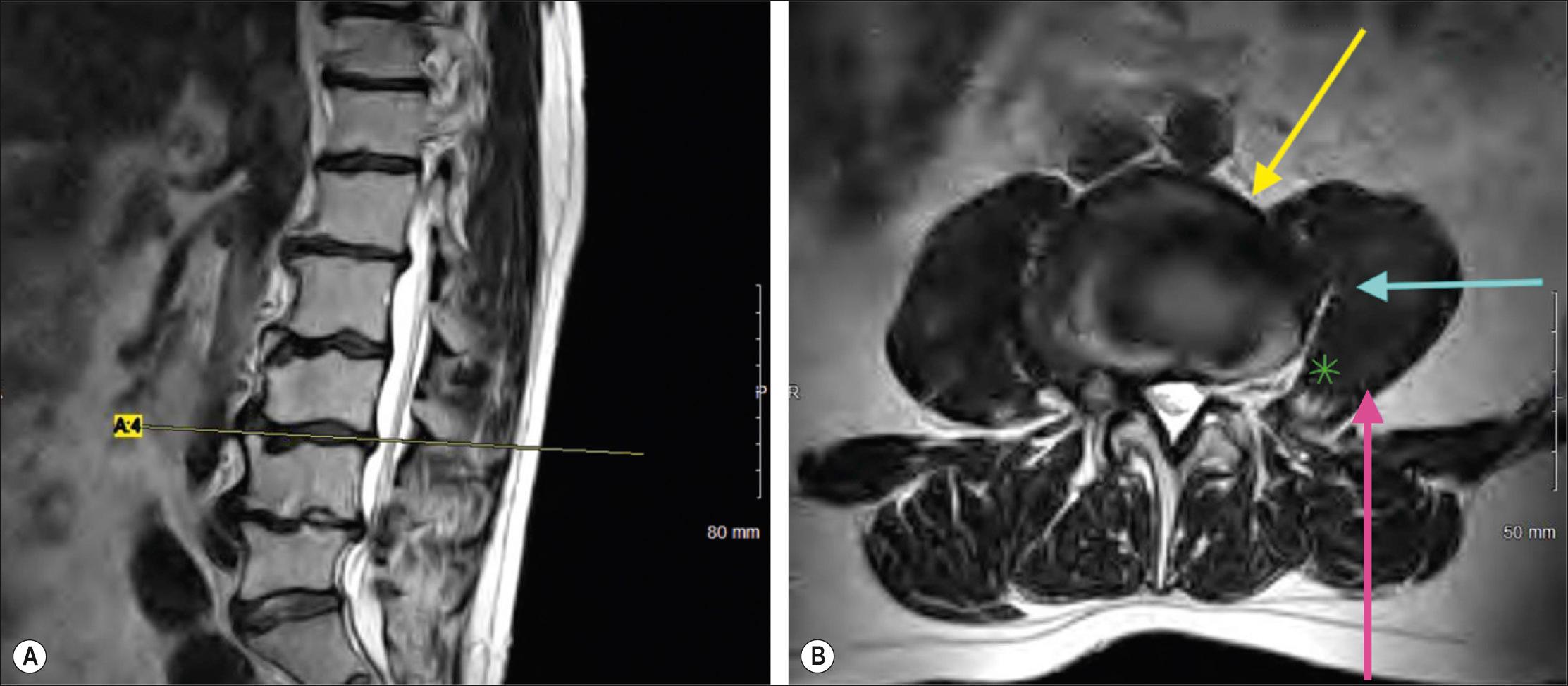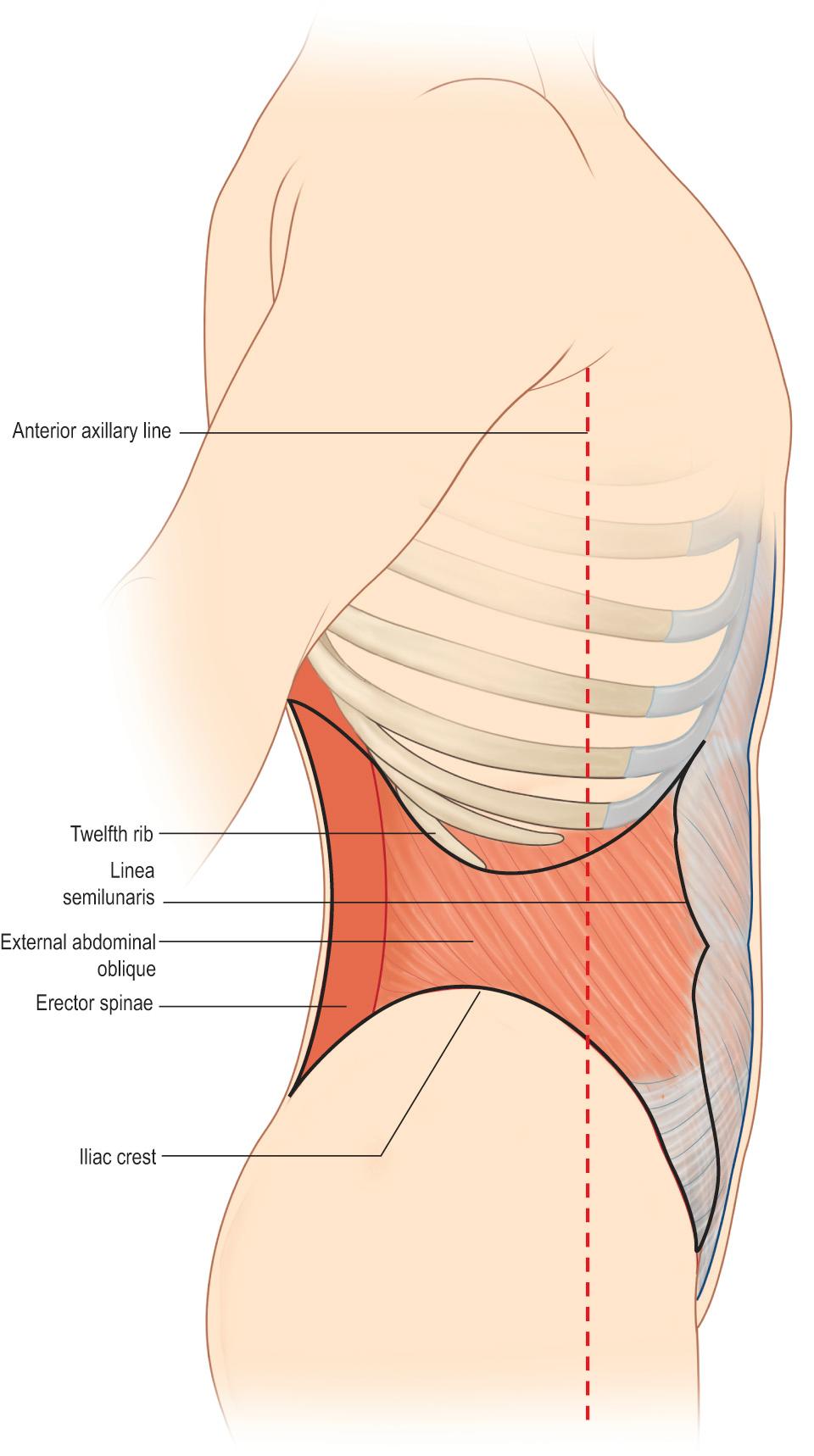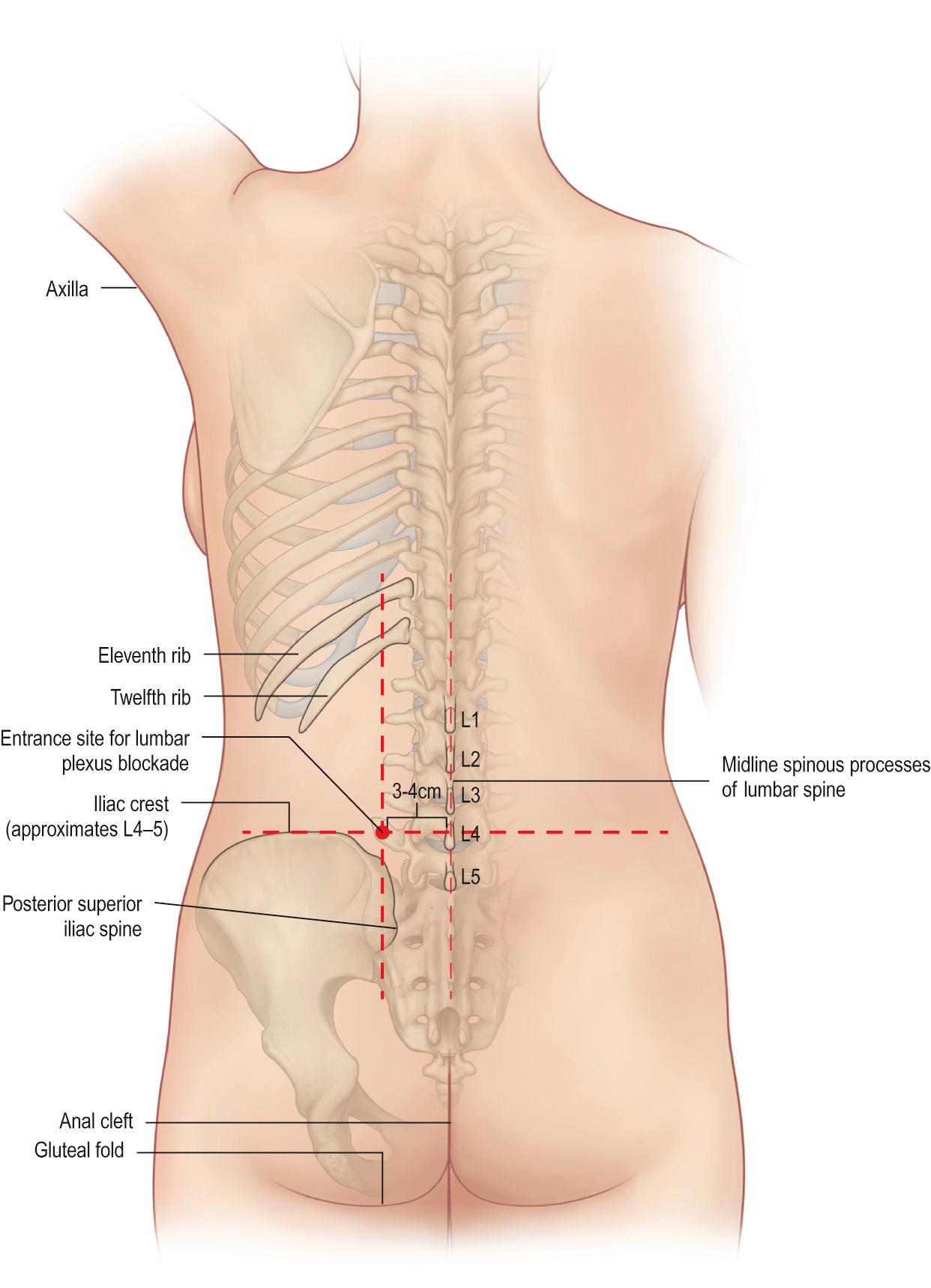Physical Address
304 North Cardinal St.
Dorchester Center, MA 02124
Nerve blockades best illustrate important surgical landmarks of the lumbosacral plexus (LSP) and its branches. Lumbar plexus and sciatic nerve blockade can be used to achieve near-total anaesthesia of the lower limb, either via a single injection or through placement of catheters for continuous, prolonged analgesia. Anaesthetic blockade can be initiated at the level of the lumbar plexus, the level of gluteus maximus, inferior to gluteus maximus, within the popliteal fossa, or at the ankle.
The LSP is housed within psoas major in the retroperitoneal space. The retroperitoneum is usually entered from a lateral or ventrolateral approach ( Fig. 78.1 ), though it can also be entered through a transperitoneal approach or, rarely, through a prone dorsal approach. The surface boundaries of the lateral approach include the twelfth rib superiorly, the iliac crest inferiorly, the edge of erector spinae dorsally and the lateral edge of rectus abdominis (linea semilunaris) ventrally ( Fig. 78.2 ).


Psoas major can be targeted from a posterior trajectory with the patient in a lateral decubitus position to achieve lumbar plexus nerve blockade ( Fig. 78.3 ). The pertinent landmarks are the spinous processes of the lumbar spine, which mark the midline of the patient, and the iliac crest. A line drawn 4 cm lateral to the intersection of the iliac crest and the midline spinous process marks the needle insertion site; nerve-stimulating needles are inserted perpendicular to the skin plane and advanced until quadriceps femoris contracts (stimulation of the femoral nerve). If the transverse process is contacted en route , the needle can be ‘walked off’ either superiorly or inferiorly, approximately 2 cm deeper, to enter psoas major.

The femoral nerve lies lateral to the femoral artery, superficially within the inguinal crease. An anterior branch of the femoral nerve, which innervates sartorius, is encountered first. Stimulation elicits contraction of sartorius along the medial aspect of the thigh. To achieve anaesthesia throughout the femoral nerve distribution, the needle should be redirected laterally without withdrawal and advanced until the patella twitches, indicating stimulation of the muscular branches that innervate the quadriceps femoris.
Become a Clinical Tree membership for Full access and enjoy Unlimited articles
If you are a member. Log in here